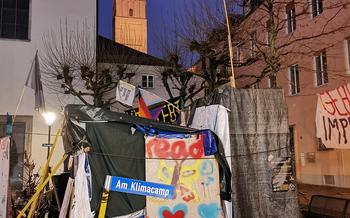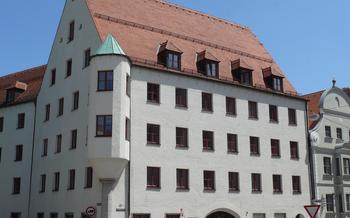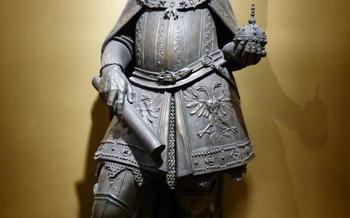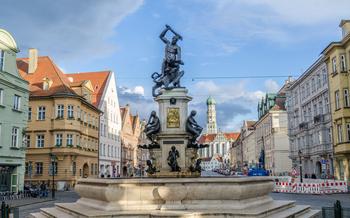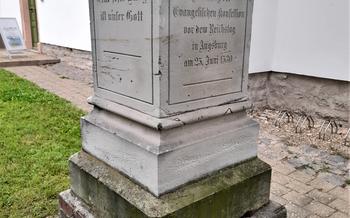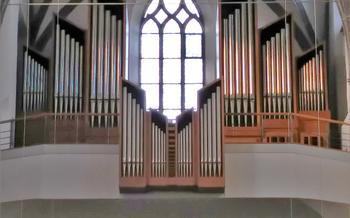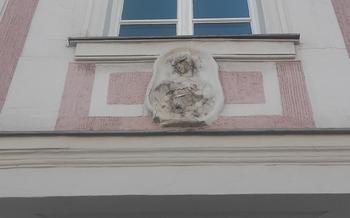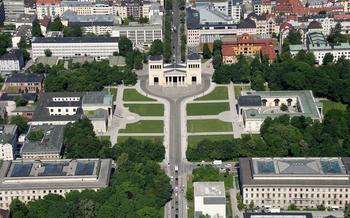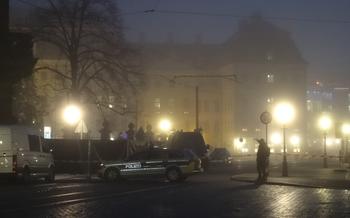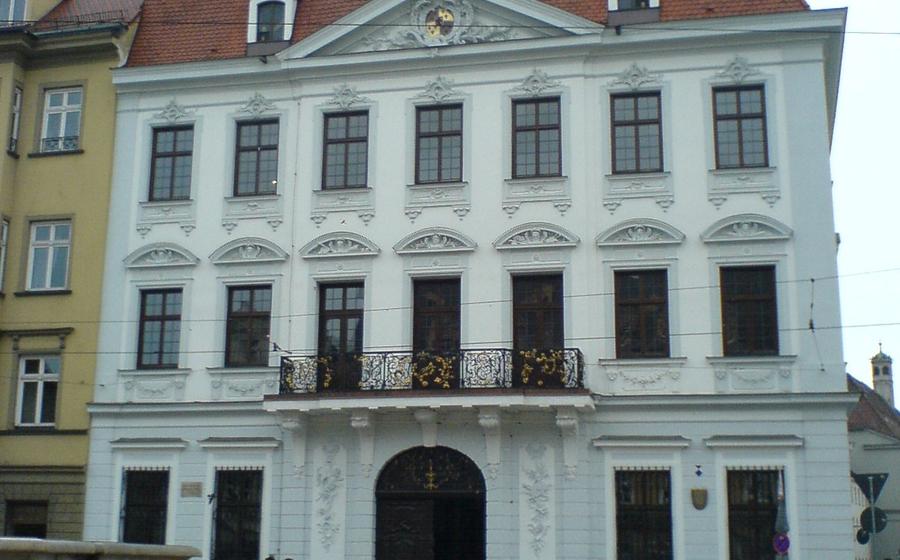
Schaezlerpalais
- Schaezlerpalais: A Baroque Masterpiece in Augsburg
- The History of the Schaezlerpalais
- The Architecture of the Schaezlerpalais
- The Interior of the Schaezlerpalais
- The Schaezlerpalais as a Museum
- The Schaezlerpalais Park
- The Schaezlerpalais and the City of Augsburg
- The Schaezlerpalais during World War II
- Visiting the Schaezlerpalais
- The Schaezlerpalais for Families
- The Schaezlerpalais for Art Lovers
- The Schaezlerpalais for History Buffs
Schaezlerpalais: A Baroque Masterpiece in Augsburg
The Schaezlerpalais is an opulent Baroque palace located in the heart of Augsburg, Germany. Built in the 18th century as a private residence for the wealthy Schaezler family, the palace is a testament to the city's rich history and architectural heritage. Today, the Schaezlerpalais serves as a museum, showcasing a collection of art and artifacts that tell the story of Augsburg's past. Visitors can explore the palace's grand state rooms, marvel at its intricate Baroque details, and learn about the fascinating lives of the Schaezler family and their impact on the city.
Historical significance: The Schaezlerpalais is a significant historical landmark in Augsburg, representing the city's rise to prominence as a center of trade and finance during the 18th century. The palace was built by Benedikt Adam Liebert, a successful merchant and banker, who spared no expense in creating a residence that reflected his family's wealth and status.
Architectural beauty: The Schaezlerpalais is renowned for its stunning Baroque architecture, characterized by its elaborate facade, intricate carvings, and graceful curves. Designed by Johann Georg Fischer, one of the leading architects of the time, the palace is a masterpiece of Baroque artistry. The palace's grand entrance hall, adorned with marble columns and a sweeping staircase, sets the tone for the opulent interiors that await visitors.
Current use as a museum: In 1918, the Schaezlerpalais was acquired by the city of Augsburg and transformed into a museum. Today, the palace houses a collection of art and artifacts that span several centuries, including paintings, sculptures, furniture, and decorative arts. The museum's collection provides a glimpse into the history of Augsburg and the lifestyles of its wealthy residents during the Baroque period.
Practical information for visitors: The Schaezlerpalais is open to the public from Tuesday to Sunday. Admission fees apply, with discounts available for students, seniors, and families. Guided tours are offered in German and English, providing visitors with a deeper understanding of the palace's history and architecture. The museum also hosts temporary exhibitions, educational programs, and special events throughout the year.
The History of the Schaezlerpalais
The Schaezlerpalais is steeped in a rich history that dates back to the 18th century. Its story is intertwined with the rise of the Schaezler family, who played a significant role in the development of Augsburg.
In 1765, Johann Lorenz Schaezler, a successful merchant and banker, commissioned the construction of the palace as a testament to his family's wealth and prominence. The palace was designed by Johann Georg Fischer, one of the most renowned architects of the Baroque period, and its construction was completed in 1770.
The Schaezler family resided in the palace for several generations, using it as a private residence and a place to conduct business. In the 19th century, the palace was acquired by the Bavarian government and served as a government building for many years.
Remarkably, the Schaezlerpalais survived the devastating air raids of World War II with only minor damage. This architectural gem stood as a symbol of resilience and continuity amidst the ruins of postwar Augsburg.
The Architecture of the Schaezlerpalais
The Schaezlerpalais is a masterpiece of Baroque architecture, a style that emerged in Italy in the 16th century and spread throughout Europe in the 17th and 18th centuries. Baroque architecture is characterized by its grandeur, opulence, and dramatic use of space and light.
The Schaezlerpalais exemplifies the Baroque style with its grand facade, intricate details, and elaborate ornamentation. The facade is divided into three sections, with the central section projecting forward and topped by a triangular pediment. The windows are framed by elaborate moldings, and the entrance is flanked by two pairs of columns.
The interior of the palace is equally impressive, with a grand entrance hall and staircase, opulent state rooms, and private apartments. The state rooms are decorated with lavish frescoes, paintings, and sculptures, while the private apartments are more intimate and cozy. The palace also has a collection of art and furniture from the Baroque period.
The Schaezlerpalais was designed by Johann Georg Fischer, one of the most prominent architects of the Baroque period in Germany. Fischer was influenced by Italian architecture, and the Schaezlerpalais shows the influence of Italian Baroque palaces such as the Palazzo Farnese in Rome.
The Schaezlerpalais is a testament to the skill and artistry of the Baroque period. It is a masterpiece of architecture that is sure to impress visitors with its grandeur and beauty.
The Interior of the Schaezlerpalais
The interior of the Schaezlerpalais is as impressive as its exterior. The grand entrance hall features a sweeping staircase that leads to the upper floors. The state rooms are opulent and lavishly decorated, with intricate carvings, frescoes, and tapestries. The private apartments are more intimate, with a cozy and comfortable atmosphere.
The palace also boasts a collection of art and furniture that is second to none. The collection includes paintings by renowned artists such as Albrecht Dürer, Hans Holbein the Younger, and Lucas Cranach the Elder. The furniture is mostly from the 17th and 18th centuries and includes pieces by famous cabinetmakers such as David Roentgen and Johann Heinrich Riesener.
The Schaezlerpalais as a Museum
The Schaezlerpalais is not just a splendid architectural masterpiece but also a significant cultural institution in Augsburg. In 1915, the palace underwent a remarkable transformation, transitioning from a private residence to a public museum. The brainchild of art collector and textile industrialist Baron Eduard von Schaezler, this decision forever etched the palace into the annals of Augsburg's cultural heritage.
Today, the Schaezlerpalais Museum serves as a treasure trove of art and artifacts, meticulously curated to reflect the diverse interests of Baron von Schaezler. Visitors are enthralled by an eclectic collection spanning ancient Egyptian relics, medieval sculptures, Renaissance paintings, Baroque furnishings, and an array of decorative arts. Each piece narrates a chapter in the rich history of Augsburg and European craftsmanship, offering visitors a captivating journey through time.
Beyond its impressive collection, the Schaezlerpalais Museum is renowned for its educational programs and exhibitions. Temporary exhibitions delve into specific themes or artists, while educational workshops and guided tours bring the palace's history and collection to life for visitors of all ages. Whether you are an art enthusiast, history buff, or simply seeking a glimpse into the grandeur of a bygone era, the Schaezlerpalais Museum is an unmissable destination.
The Schaezlerpalais Park
During the 18th century, the Schaezlerpalais was surrounded by a vast and beautiful park that stretched beyond the city walls. This park was designed as a Baroque masterpiece, with intricate gardens, sculptures, and fountains.
The park was a favorite retreat for the Schaezler family and their guests, who would stroll along the paths, relax in the shade of the trees, and enjoy the fresh air and sunshine. The park was also open to the public, and it quickly became a popular destination for the citizens of Augsburg.
Today, the Schaezlerpalais Park is still a beloved public space. Visitors can wander through the gardens, admire the sculptures and fountains, and enjoy the tranquility of this historic park. The park is also home to a variety of events throughout the year, including concerts, exhibitions, and festivals.
The Schaezlerpalais and the City of Augsburg
The Schaezlerpalais holds a significant place in the development and identity of Augsburg. As a prominent landmark, it served as a symbol of the city's wealth, power, and cultural heritage. The palace's grand architecture and lavish interiors reflected the prosperity of the city during the Baroque period. It was a testament to the city's status as a major trading and financial center in Europe.
The palace's location in the heart of Augsburg, adjacent to the Town Hall, further emphasized its importance. It became a venue for official city functions, ceremonies, and events. The grand state rooms and reception halls provided an opulent setting for meetings, celebrations, and diplomatic gatherings. The palace's use for these purposes reinforced its role as a symbol of civic authority and prestige.
Furthermore, the Schaezlerpalais played a crucial role in promoting tourism in Augsburg. Its architectural and historical significance attracted visitors from across the region and beyond. The palace's impressive collection of art and artifacts, along with its beautiful gardens, made it a popular destination for tourists seeking to explore the city's rich cultural heritage.
The Schaezlerpalais during World War II
Despite the ravages of World War II, the Schaezlerpalais miraculously survived. While many of Augsburg's historic buildings were reduced to rubble, the palace remained relatively unscathed, a testament to its sturdy construction and fortunate location. Although it sustained some damage, including shattered windows and a damaged roof, the palace's overall structure remained intact.
The palace's survival during the war can be attributed to several factors. Firstly, its location on a quiet side street may have spared it from the worst of the Allied bombing raids. Secondly, the palace's thick walls and solid construction provided it with a degree of protection against the bombs. Finally, the efforts of the palace's caretakers, who remained on site throughout the war, helped to minimize the damage sustained by the building.
After the war, the Schaezlerpalais underwent extensive restoration work to repair the damage caused by the bombing. The palace's roof was repaired, the windows were replaced, and the interior was restored to its former glory. Today, the Schaezlerpalais stands as a testament to the resilience of Augsburg and its commitment to preserving its cultural heritage.
Visiting the Schaezlerpalais
Practical information is essential for planning your visit to the Schaezlerpalais. The palace is open to the public from Tuesday to Sunday, with varying hours of operation depending on the season. Admission fees apply, with discounts available for students, seniors, and families. Guided tours are offered in German and English, providing a deeper insight into the palace's history and architecture.
To make the most of your visit, plan your itinerary carefully. Start with the palace's grand entrance hall and staircase, leading to the opulent state rooms with their lavish decorations. Explore the private apartments for a glimpse into the Schaezler family's private life. Don't miss the palace's collection of art and furniture, showcasing works from various periods and styles.
After exploring the palace's interior, step outside to admire the beautiful Schaezlerpalais Park. Take a leisurely stroll through the park, enjoying the sculptures, fountains, and tranquil atmosphere. The park is a perfect place to relax and unwind after your visit to the palace.
To enhance your visit, consider dining at one of the nearby restaurants, offering a variety of cuisines to suit every taste. For accommodation, choose from a range of hotels located within walking distance of the palace.
The Schaezlerpalais for Families
Families visiting the Schaezlerpalais will find plenty to keep them entertained and engaged. The palace offers a variety of activities and attractions designed specifically for children, including:
- Interactive Exhibits: The museum has several interactive exhibits that allow children to learn about the palace's history and architecture in a fun and engaging way. These exhibits include touch screens, games, and puzzles.
- Children's Workshops: The museum regularly hosts workshops and activities for children, such as art workshops, history workshops, and storytelling sessions. These workshops are a great way for children to learn about the palace and its history in a hands-on way.
- Family Tours: The museum offers family tours that are tailored to the interests of children. These tours highlight the palace's most family-friendly features and include interactive activities and games.
- Picnics in the Park: The Schaezlerpalais Park is a great place for families to relax and have a picnic. The park has plenty of green space for children to run and play, as well as a playground and a fountain.
To make your visit to the Schaezlerpalais enjoyable for the whole family, here are a few tips:
- Plan your visit: Before you go, take some time to look at the museum's website and see what activities and events are happening during your visit. This will help you plan your day and make the most of your time.
- Bring snacks and drinks: The museum does not have a café, so it is a good idea to bring snacks and drinks for your family, especially if you have young children.
- Take breaks: The palace is large, so it is important to take breaks throughout your visit. There are plenty of places to sit down and rest, both inside the palace and in the park.
- Make it a learning experience: The Schaezlerpalais is a great place to learn about history, architecture, and art. Encourage your children to ask questions and explore the palace's exhibits and activities.
The Schaezlerpalais for Art Lovers
The Schaezlerpalais is a treasure trove for art lovers, housing a remarkable collection of paintings, sculptures, and decorative arts. The palace's state rooms are adorned with magnificent ceiling frescoes, intricate tapestries, and opulent chandeliers. Visitors can admire works by renowned artists such as Hans Holbein the Younger, Lucas Cranach the Elder, and Peter Paul Rubens. The palace also houses a collection of Meissen porcelain, silver, and furniture that provides a glimpse into the lavish lifestyle of the Schaezler family.
For art enthusiasts, a visit to the Schaezlerpalais is a must. The palace's collection is diverse and offers something for everyone, from Renaissance masterpieces to Baroque sculptures to exquisite decorative arts. Guided tours and audio guides are available to provide visitors with in-depth information about the artworks and their historical context.
In addition to the permanent collection, the Schaezlerpalais also hosts temporary exhibitions throughout the year. These exhibitions showcase the work of contemporary artists as well as historical masters, providing visitors with a fresh perspective on the palace's collection.
Insider Tip: Don't miss the opportunity to visit the palace's secret garden, located behind the main building. This hidden oasis features a variety of plants and flowers, as well as sculptures and fountains. It's the perfect place to relax and enjoy the tranquility of the palace grounds.
The Schaezlerpalais for History Buffs
History buffs will delight in exploring the rich history of the Schaezlerpalais and its role in the history of Augsburg. Guided tours and lectures provide an in-depth look at the palace's past, from its construction to its use as a private residence, a government building, and a museum. Visitors can learn about the Schaezler family and their rise to prominence, as well as the influence of the Fugger family on the palace's design and construction. The Schaezlerpalais is also closely linked to the history of Augsburg, and visitors can learn about the palace's role in the development of the city and its significance as a symbol of the city's wealth and power.
For those who want to delve deeper into the history of the Schaezlerpalais and Augsburg, there are several historical sites and museums nearby. The Augsburg City Museum provides a comprehensive overview of the city's history, while the Fugger Museum offers insights into the life and legacy of the Fugger family. Visitors can also explore the many other historical buildings in Augsburg, such as the Rathaus, the Perlachturm, and the Fuggerei, which provide a glimpse into the city's rich past.
